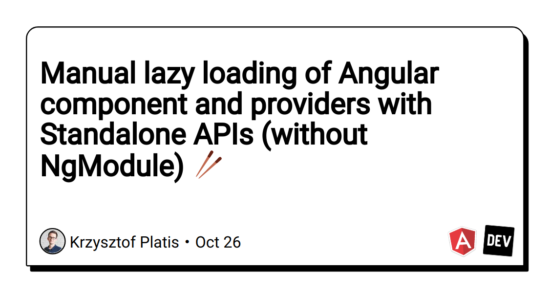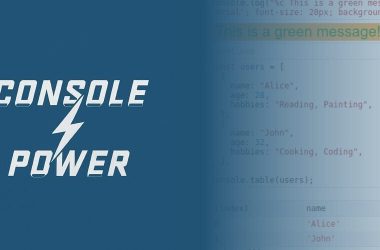With Angular Standalone APIs (introduced in v14) it’s possible to manually lazy load a component (even with it’s dependency services and providers), similarly to how we would manually lazy load a NgModule. We just need to create ourselves a child EnvironmentInjector (simulating what a lazy-loaded NgModule would do). This is also exactly what the Angular Router does since v14, when instantiating a component for a Route that has it’s own providers array.
TLDR: See the stackblitz example of manually lazy loading a component with a service, with Standalone APIs.
For example, let’s say we have a barrel index.ts with items that we want to lazy load all together – a component and a service. And let’s suppose the component depends on the service.
// lazy/index.ts
export * from './lazy.service';
export * from './lazy.component';
// custom naming convention - export an array named `providers`:
export const providers = [LazyService];
Then we can lazy load this barrel and create a child EnvironmentInjector (containing all barrel’s providers). Later on this injector can be used when instantiating the lazy component (so the component has the access to the providers mentioned above).
export class AppComponent {
constructor(
protected viewContainerRef: ViewContainerRef,
protected injector: Injector,
protected environmentInjector: EnvironmentInjector
) {}
lazyLoadComponent() {
// 1. lazy load the barrel file
import('./lazy/index').then((lazyBarrel) => {
// 2. create manually an `EnvironmentInjector` with all
// the `providers` exported from the lazy barrel.
// Pass `this.environmentInjector` as a parent.
const childEnvironmentInjector = createEnvironmentInjector(
lazyBarrel.providers,
this.environmentInjector,
'Lazy Environment Injector'
);
// 3. instantiate a lazy component, passing:
// the parent component's element `Injector`
// and the just created child `EnvironmentInjector`
const lazyComponent = createComponent(lazyBarrel.LazyComponent, {
environmentInjector: childEnvironmentInjector,
elementInjector: this.injector,
});
// 4. attach the lazy component inside the parent component
this.viewContainerRef.insert(lazyComponent.hostView);
});
}
Routing-driven lazy loading – Angular 14 source code analysis
The above approach is very similar to how the Angular Router instantiates components (not only lazy-loaded) under the hood, since version 14. When matching an URL against a Route that contains an array of providers, Angular creates a child EnvironmentInjector. Later on, when the Route, Angular takes the Route‘s EnvironmentInjector (or the closest injector defined in the parent Routes) and then it uses this EnvironmentInjector when creating a component instance, so the component has access to the Route‘s providers.



![how-to-write-a-group-product-manager-cover-letter-[+-examples]](https://prodsens.live/wp-content/uploads/2022/10/4962-how-to-write-a-group-product-manager-cover-letter-examples-110x110.jpg)


